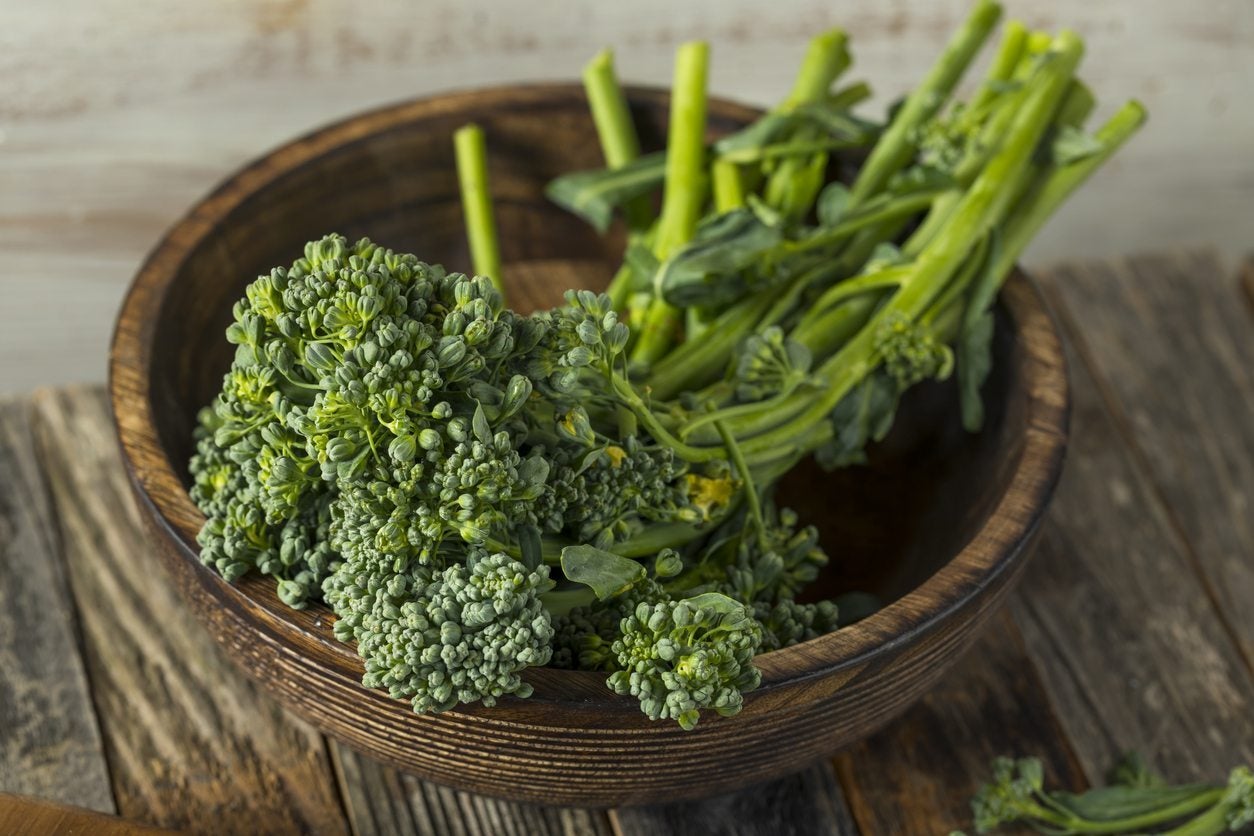
If you go into a fairly nice restaurant these days, you may find that your side of broccoli has been replaced by something called broccolini, sometimes referred to as baby broccoli. What is brocollini? It looks sort of like broccoli, but is it? How do you grow baby broccoli? Read on for broccolini information on growing broccolini and baby broccoli care.
What is Broccolini?
Broccolini is a hybrid of European broccoli and Chinese gai lan. In Italian, the word ‘broccolini’ means baby broccoli, hence it’s other common name. Although it is partially comprised of broccoli, unlike broccoli, broccolini has very small florets and a tender stem (no need to peel!) with large, edible leaves. It has a subtle sweet/peppery flavor.
Broccolini Information
Broccolini was developed over a span of eight years by the Sakata Seed Company of Yokohama, Japan in Salinas, California in 1993. Originally called ‘aspabroc,’ it is a natural rather than genetically modified hybrid. The original name of ‘aspabroc’ was chosen for the undertones of asparagus reminiscent of the hybrid. In 1994, Sakata partnered with Sanbon Inc. and began marketing the hybrid under the name Asparation. By 1998, a partnership with Mann Packing Company led to the crop being called Broccollini. Due to the myriad of names broccoli has gone by, it can still be found under many of the following: asparation, asparations, sweet baby broccoli, bimi, broccoletti, broccolette, sprouting broccoli, and tenderstem. High in vitamin C, broccolini also contains vitamin A and E, calcium, folate, iron, and potassium, all with just 35 calories a serving.
How to Grow Baby Broccoli
Growing broccolini has similar requirements to broccoli. Both are cool weather crops, although broccolini is more sensitive to cold than broccoli but it is also less sensitive to heat than broccoli. Broccolini thrives in soil with a pH between 6.0 and 7.0. Start seeds indoors in the early spring or early fall depending on when you want to harvest. Set the plants outside when they are four to six weeks old. Space the transplants a foot (31 cm.) apart and 2 feet (61 cm.) apart in rows. If in doubt, more room is preferable between plants since broccolini can become quite a large plant.
Baby Broccoli Care
Mulch over the plant’s roots to help retain moisture, retard weeds, and keep the plant cool. Broccolini needs lots of water, at least 1 to 2 inches (2.5-5 cm.) per week. Broccolini will be ready to harvest when the heads begin to form and the leaves are a brilliant, dark green, usually 60 to 90 days after planting. If you wait until the leaves are turning yellow, the broccolini heads will be wilted instead of crisp. As with broccoli, once the head is cut, provided the plant is still green, broccolini will reward you with a last harvest of florets.
Sign up for the Gardening Know How newsletter today and receive a free copy of our e-book "How to Grow Delicious Tomatoes".

Amy Grant has been gardening for 30 years and writing for 15. A professional chef and caterer, Amy's area of expertise is culinary gardening.
